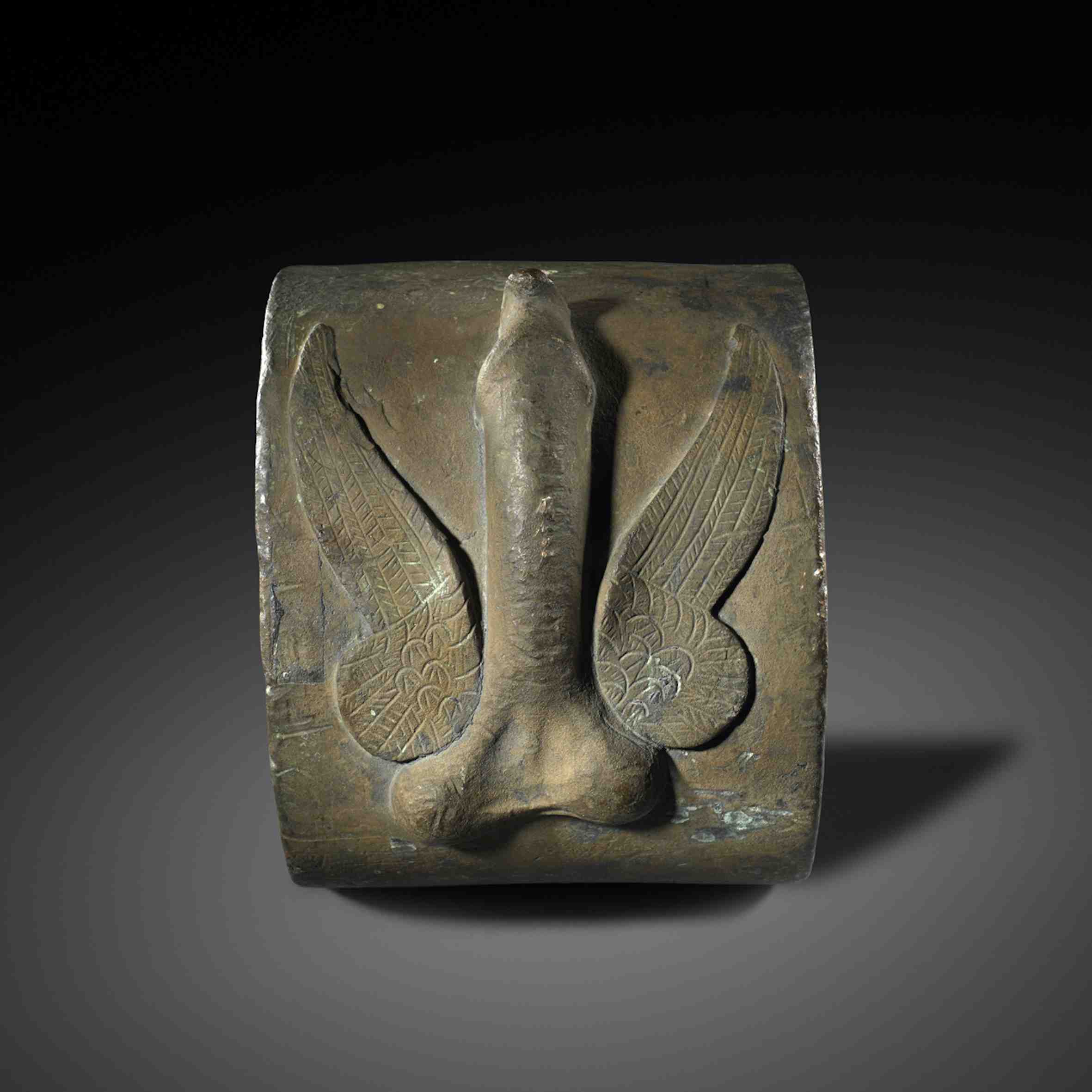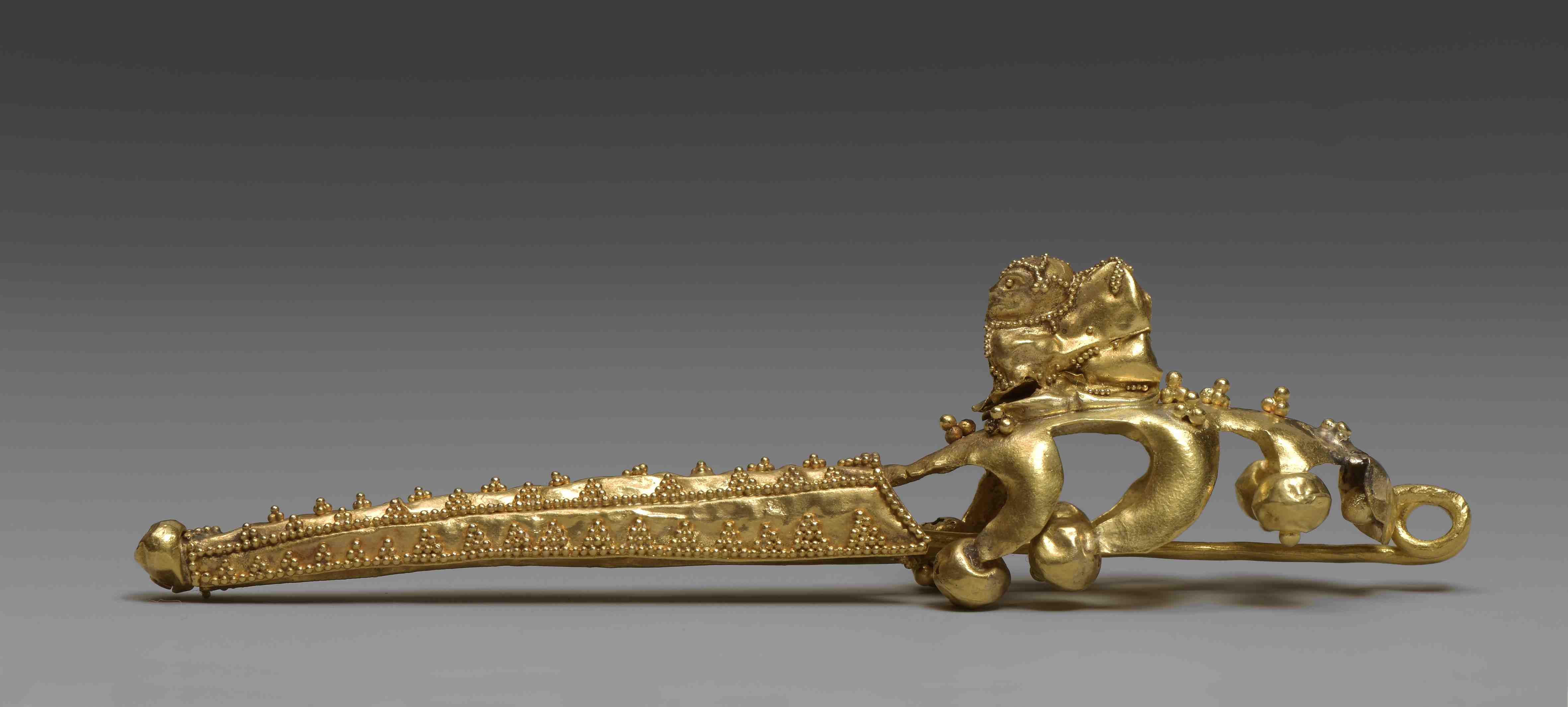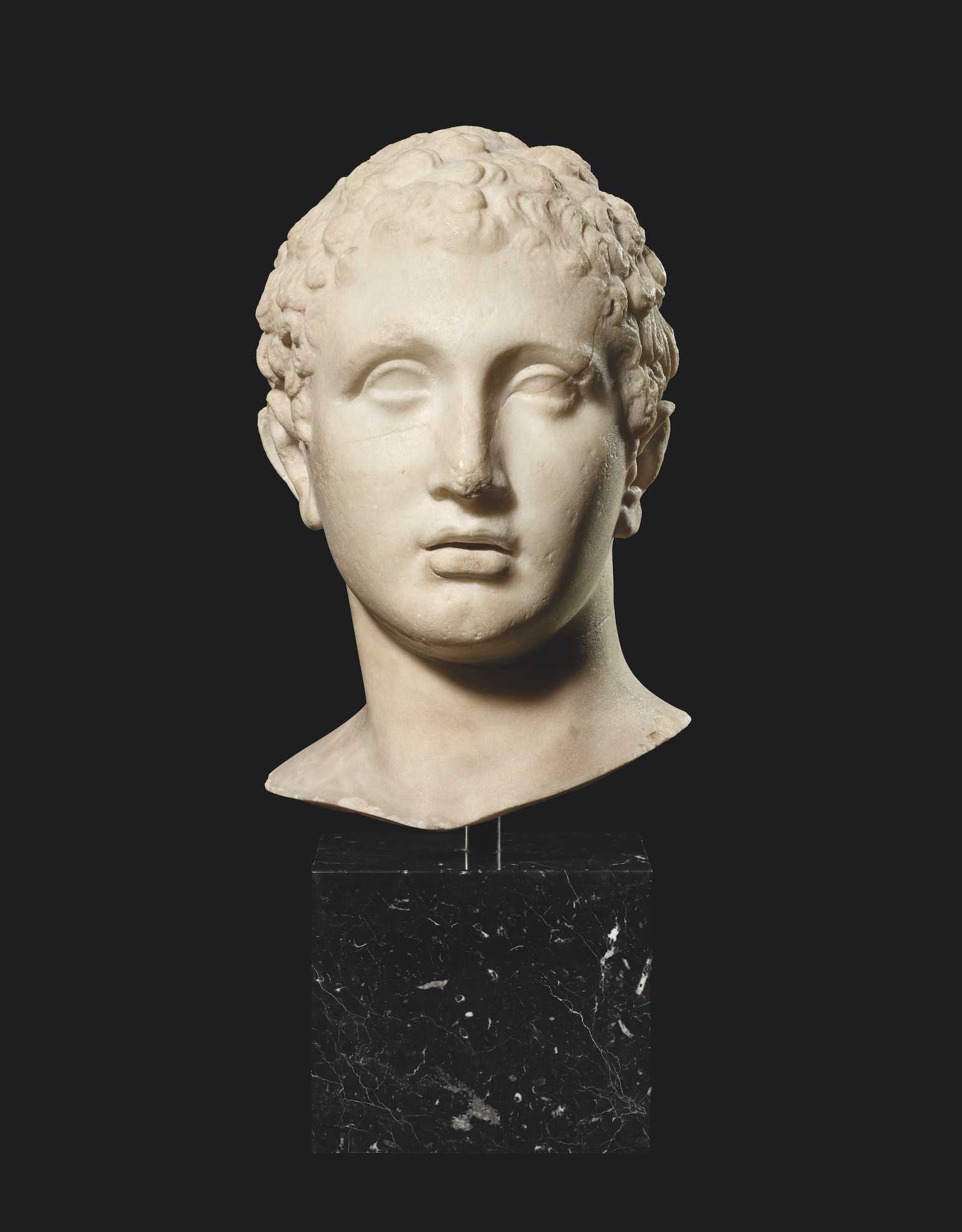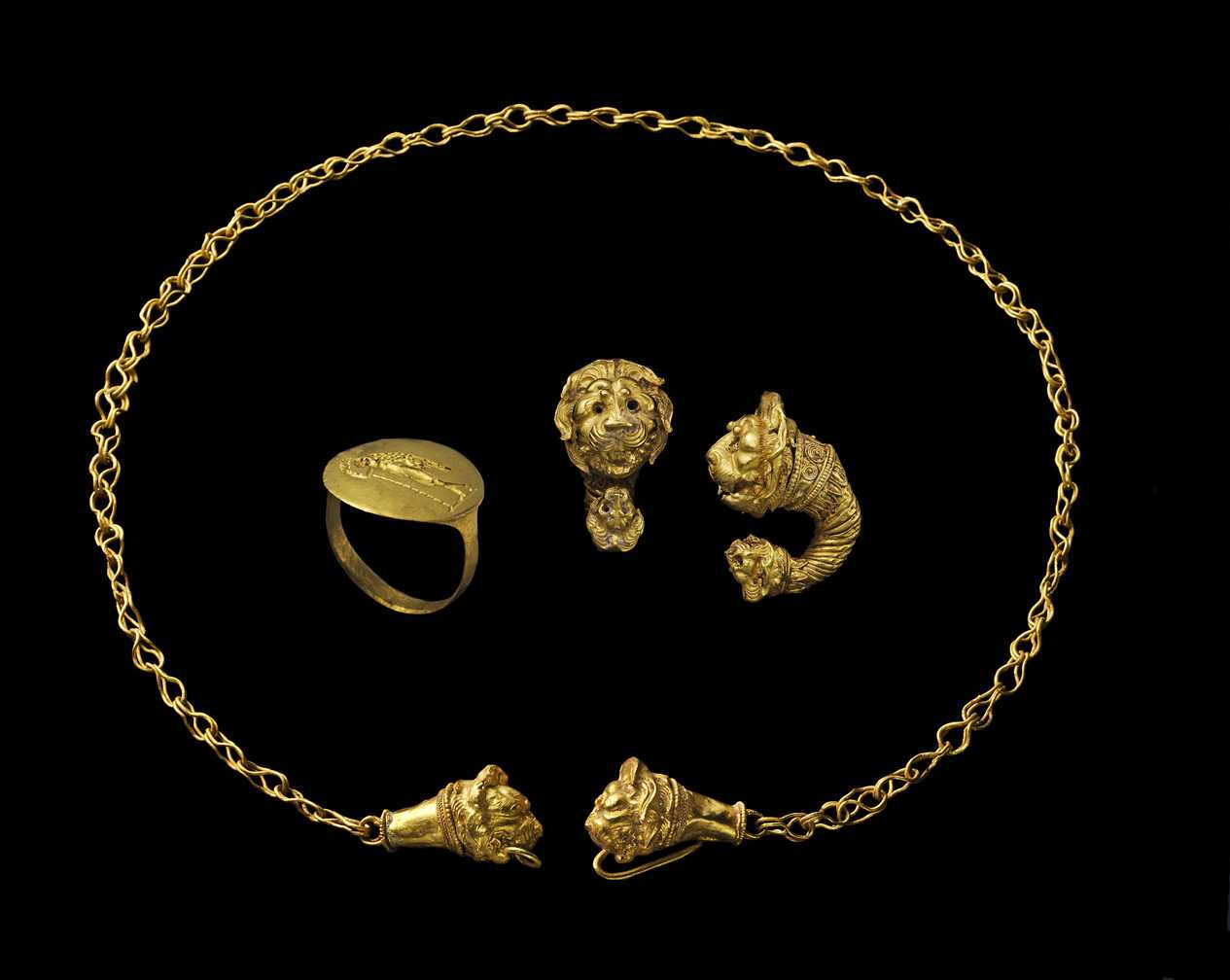The flat, plank-shaped body of terracotta, coated in a lustrous orange-red slip, narrows into another rectangle forming the neck and head. Above the face there is diagonal hatching between two bands of decorative carving. The face itself has a small, protruding nose and two impressed dots showing the eyes. Each side of the face has groups of short horizontal lines separated by two central, vertical lines descending from the mouth, with two more equally-spaced dots of a similar size to the eyes and mouth placed along the lines. The front of the body is enlivened by a stylized ‘collar’ of three bands of lines running between the shoulders, separated by rows of dots and framed by descending lines on either side of the body, terminating in groups of three dots. Further below, a row of three concentric diamonds, two large and one small, is framed by horizontal, parallel lines. The back has a broad band of crossed zigzag lines framed by horizontal, parallel lines on the lower body. A checkered-pattern can be seen on the shoulders as well as a broad, vertical band of sloping lines connected by oblique hatched bands on the head and neck, ending in a vertical line with six shorter vertical lines
Note
The figures of the Middle Chalcolithic Age (c. 3600–2700 BC) were primarily connected with pregnancy and childbirth. In the Late Chalcolithic (c. 2700–2450 BC), there appears to have been little tradition of human representation in lasting material. However, from the Early Bronze Age (c. 2450–2000 BC), representations of human forms re-emerge. In the Middle Bronze Age, figures were mostly cut from a single piece of clay. They have lustrous, flattened surfaces and are meticulously carved with ornamental elements on all four sides, suggesting that they were intended to be viewed from all sides. Stylistically, there is little variation between the figures from the flat, rectangular shape and decorative jewellery and garments. With regards to the variations that do exist, occasionally the figure carries an infant or, alternatively, has two, or sometimes even three, necks and heads.
On account of their richly decorative features, experts assert that clothing and jewellery have played a key role in the iconography of these plank-shaped figures. They have been contrastingly identified as female, male, symbols of female status, young androgynous children and even hermaphrodites, due to the lack of explicitly gendered features. These differing suggestions have led to similarly differing interpretations of their identities and functions. These range from goddesses of fertility, priestesses, specific women and men or simply humanised objects. When considering contextual evidence, they can also be associated with ritual activities in funerary contexts with certain important symbolic or spiritual powers.









